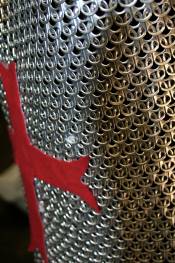Table of Contents
Style
New coaches are often confused by the Style component of Odyssey of the Mind. Style is the “Icing on the Cake”, so to speak. It is the special things the team has made or done that fit together (“Overall Effect”) to make their solution unlike anyone else's. It adds the component of artistic talent, or performance talent, or any other kind of talent to the basic skills needed to solve the Long-Term problem. It is the opportunity for the team to display their special abilities. It is also the “X-factor” - while the team only receive a certain score on style, amazing style items influence the overall appearance and “mood” of the performance.
What can be scored for style?
 Style can be any of a large number of elements. Each problem identifies one or two elements that are mandatory
for that problem. (“How well the membership sign enhances the presentation” or “creativity of use of
materials in one costume”). Then, the team also gets to pick two or three other elements, according to their
talents and desires. (Note that the team must pick the style items, not the coach, even if the coach thinks a different item would score higher).
Style can be any of a large number of elements. Each problem identifies one or two elements that are mandatory
for that problem. (“How well the membership sign enhances the presentation” or “creativity of use of
materials in one costume”). Then, the team also gets to pick two or three other elements, according to their
talents and desires. (Note that the team must pick the style items, not the coach, even if the coach thinks a different item would score higher).
Example items include: membership sign, narration, use of color, humor, appearance of character(s), props, creative use of materials, acting, artwork, or choreography.
What makes a good style item?
Here are a few different ways in which a style item could receive a high score:
- Creative: A good style item is not a straightforward solution to a problem. What is the goal of the style item? What other ways could you use to present it? Think about different materials, building techniques, sizes, lighting, technology, level of detail, mechanics, human components, and human skills.
- Original: Judges have seen many kinds of style items – show them something they have never seen before. Take your first idea and tweak it, you might come up with something totally new.
- Items often seen: “regular” trash, bottle caps, tin foil, singing, playing instruments, paintings, backdrops, costumes
- However, if an “unoriginal” idea is done very well, it doesn’t matter too much that it has been thought of or used extensively before. A painting can score well if it seems lifelike or realistic and created by a team member.
- Well described and limited in forms: Don’t make the scope of the style item too big – limit the item to its strongest aspect. If the team has a costume made out of creative materials, don’t score “The costume of character X”, score “The creative use of materials in the costume of X”. Also, make sure team members practice describing how they made the item to the judges. Tell how much of a pain it was to make! Presentation can be the difference between a 7 and a 9.
How to chose free choice style items
There are two basic approaches for choosing style items
- Develop over time: While the theme and skit are developing in early stages (or perhaps even beforehand), the team can pick an idea to create to fulfill a style item. With this approach, the team would, for example, specifically build a back drop to score as a style item. Teams might find this approach difficult as there is little structure to frame an idea, but can result in magnificent style items because of how much attention and time was put into creating them.
- Choose from existing items:As the tournament approaches, the team would spend part of a meeting listing all the components of their performance which would be eligible to score as free choice. Narrow down the list, then decide by voting or consensus. NOTE: coaches cannot decide style items for teams! Be careful to always have enough high-quality aspects of the performance available for scoring if this decision is left until late in the competition season.
Questions to consider when choosing style items
- Do you think any other team will think of this solution?
- How would this benefit your solution?
- Are there other possibilities?
- What existing materials/items might you have that can be used in a different way?
- What additional materials might you need?
- Can you modify materials to suit your needs?
- What might happen if you combine your idea with someone else’s idea?
- If you were judging this problem, how would you score your solution?
- What needs to be learned in order to accomplish this idea? For example, learning how to sew in order to make one’s costume.
Scoring style
Each problem has 1 or 2 required “STYLE ELEMENTS” which every team must have scored. In addition, each team may choose 2 or 3 other elements to have scored. Each of the 4 elements is worth up to 10 points, plus the “overall effect” of these elements is also worth 10 points. Thus the Style Score’s possible maximum is 50 points, which accounts for approximately 14% of the total possible points. Separate officials score the style portion of the problem. Teams may choose “free choice” style elements early in their approach to the Long-Term problem, or may wait until they are nearly finished to choose. The primary thing to remember is that anything scored in the Long-Term portion of the problem may NOT be chosen to be scored for style. “Section F” of each problem outlines the mandatory style elements for each problem. For example, if the propulsion of a vehicle is scored in long term scoring, the “creativity of the vehicle” could not be scored as a free choice - the team would have to distinguish a specific characteristic like materials used or artistic quality of the vehicle.
Three items of information:
- Only the Style judges see the Style form. Writing something for the long-term judges will not be helpful.
- Style judges have only a few minutes to read the Style Form. If the team uses a computer to print the form, do not use 8 point font or try to write a small novel in the bottom space! Write enough to give the general idea of what is wonderful about the team’s style, and intrigue the judges, but don’t expect the officials to be able to absorb too many details. Look on this as an advertisement for what they are about to see. And remember, only Style judges will read this.
- Style scores are 100% subjective. What one group of judges on one day really likes, another group of judges on another day might not like as much. The team can only control how THEY feel about their style elements … if they are proud of what they did, that is what counts, always! Style scores cannot be debated or argued … the judges' decision is final (and the more judges that are recruited for judging, the more styles scores can be averaged together).

